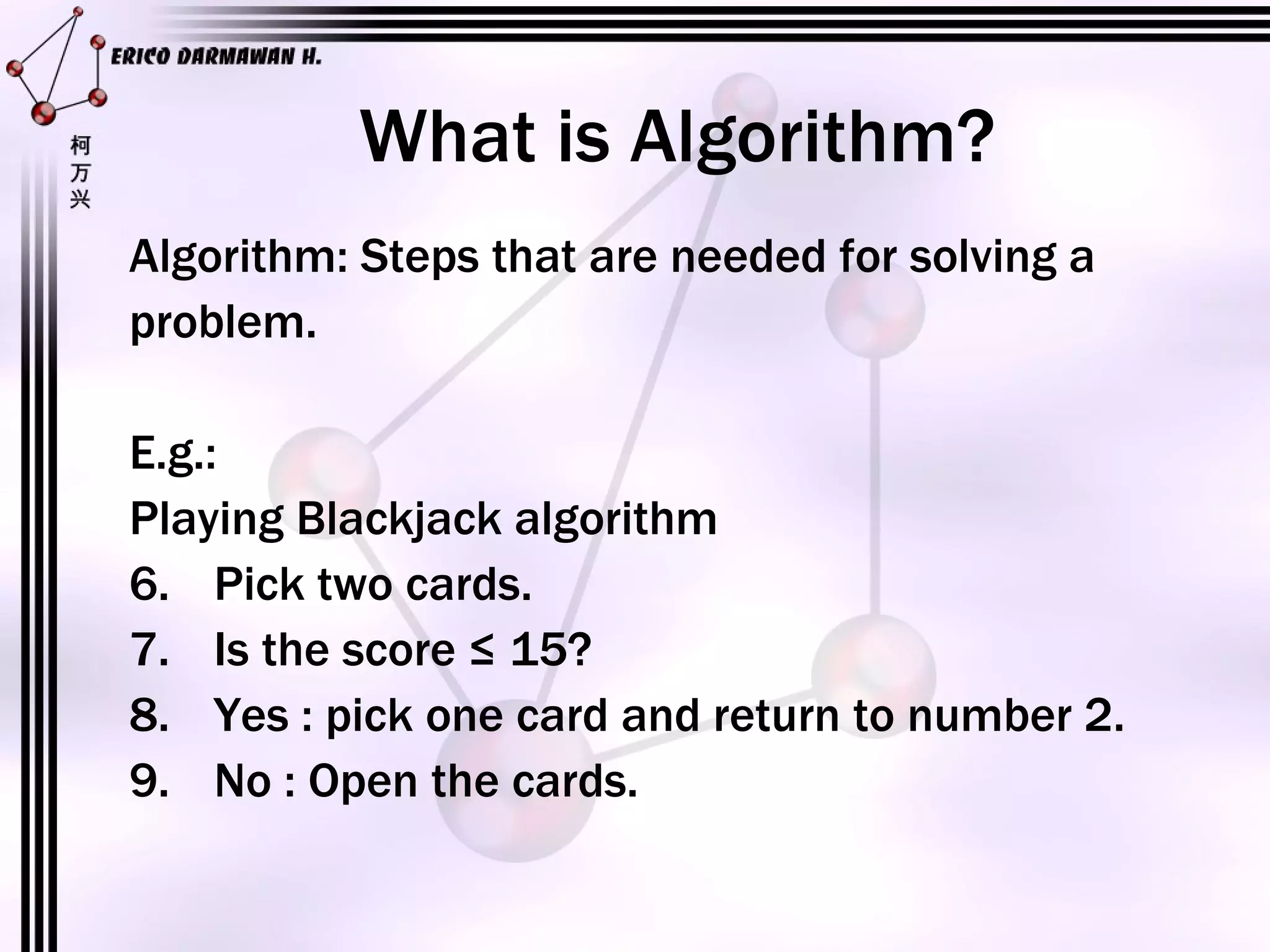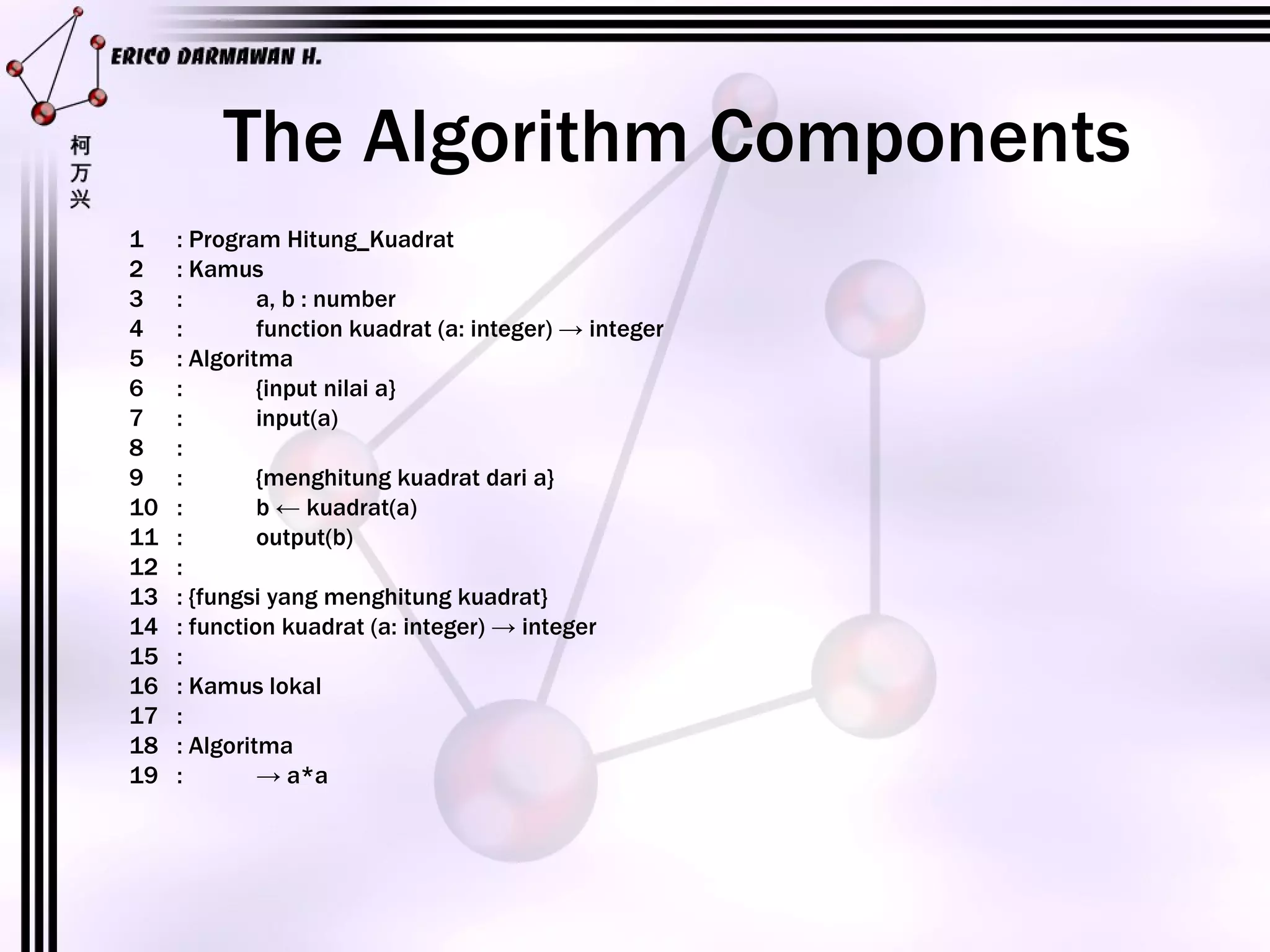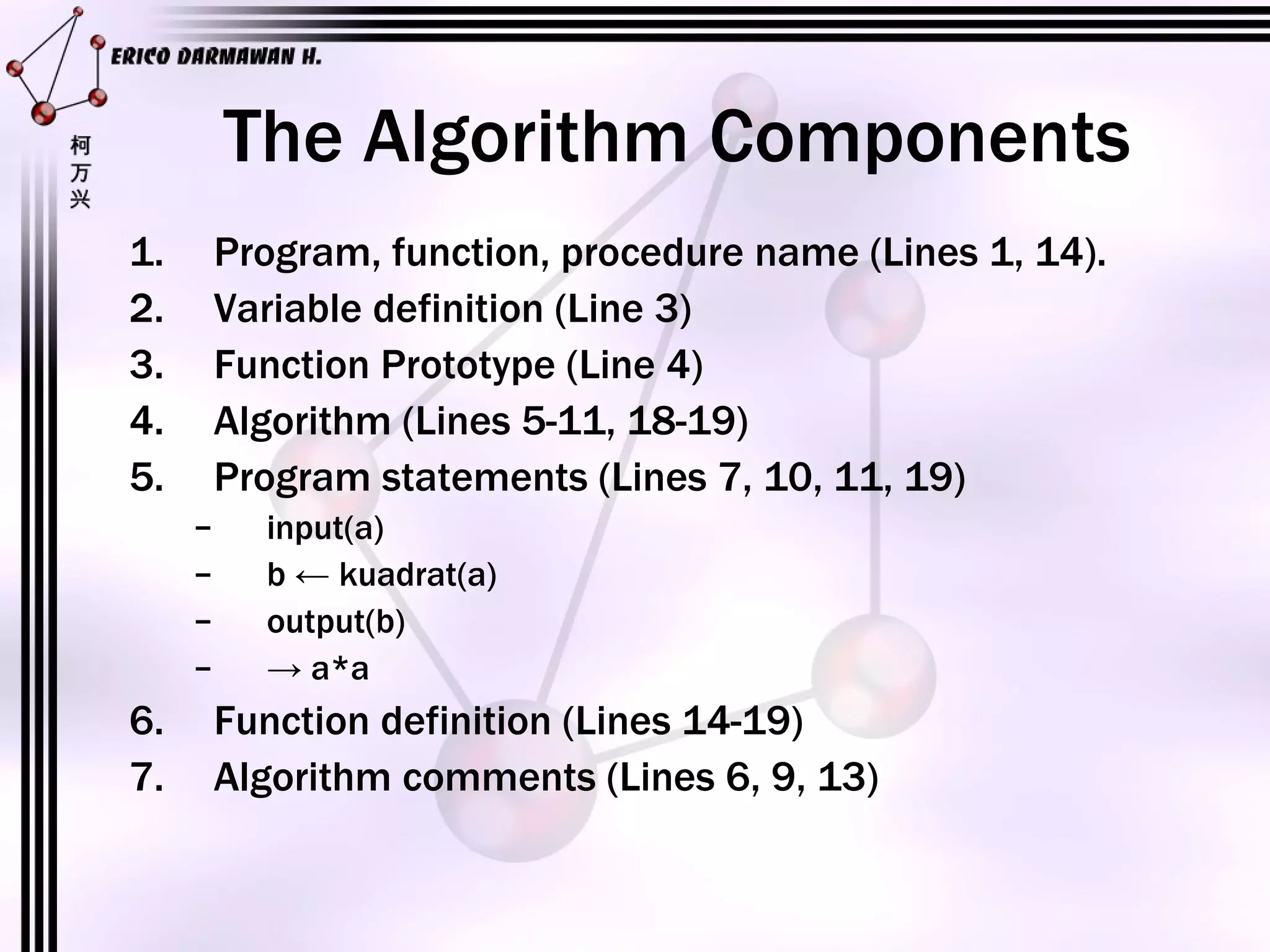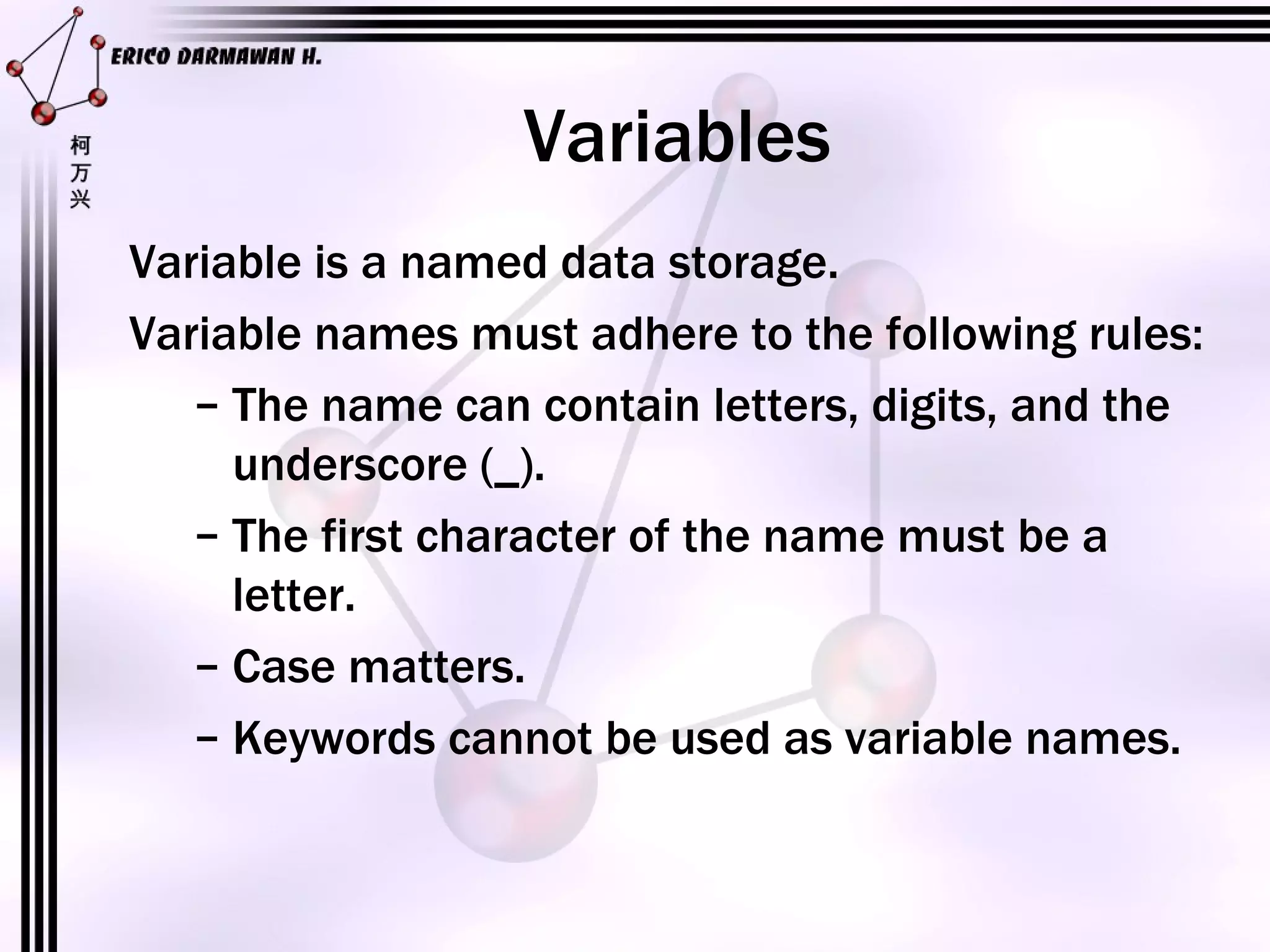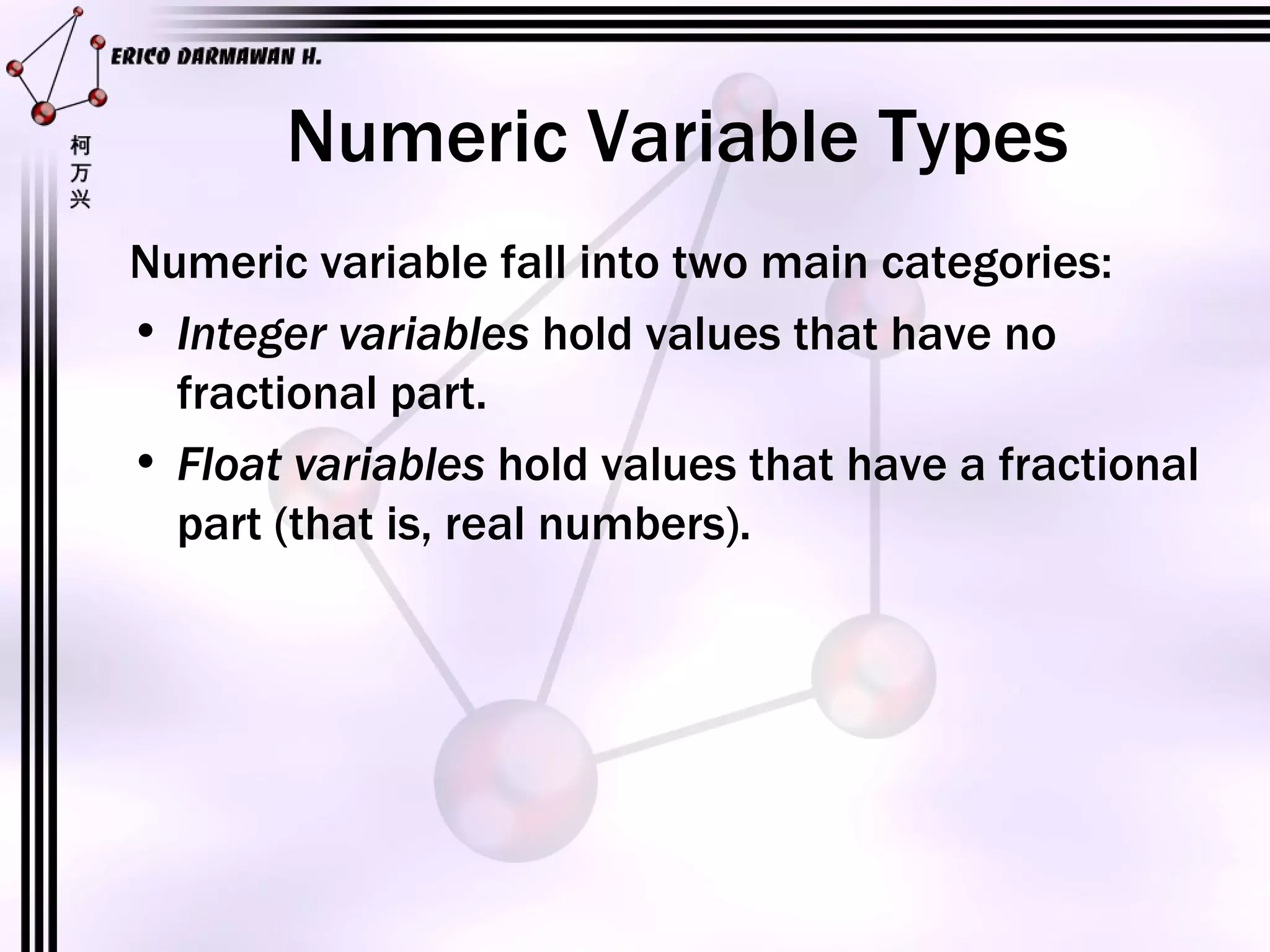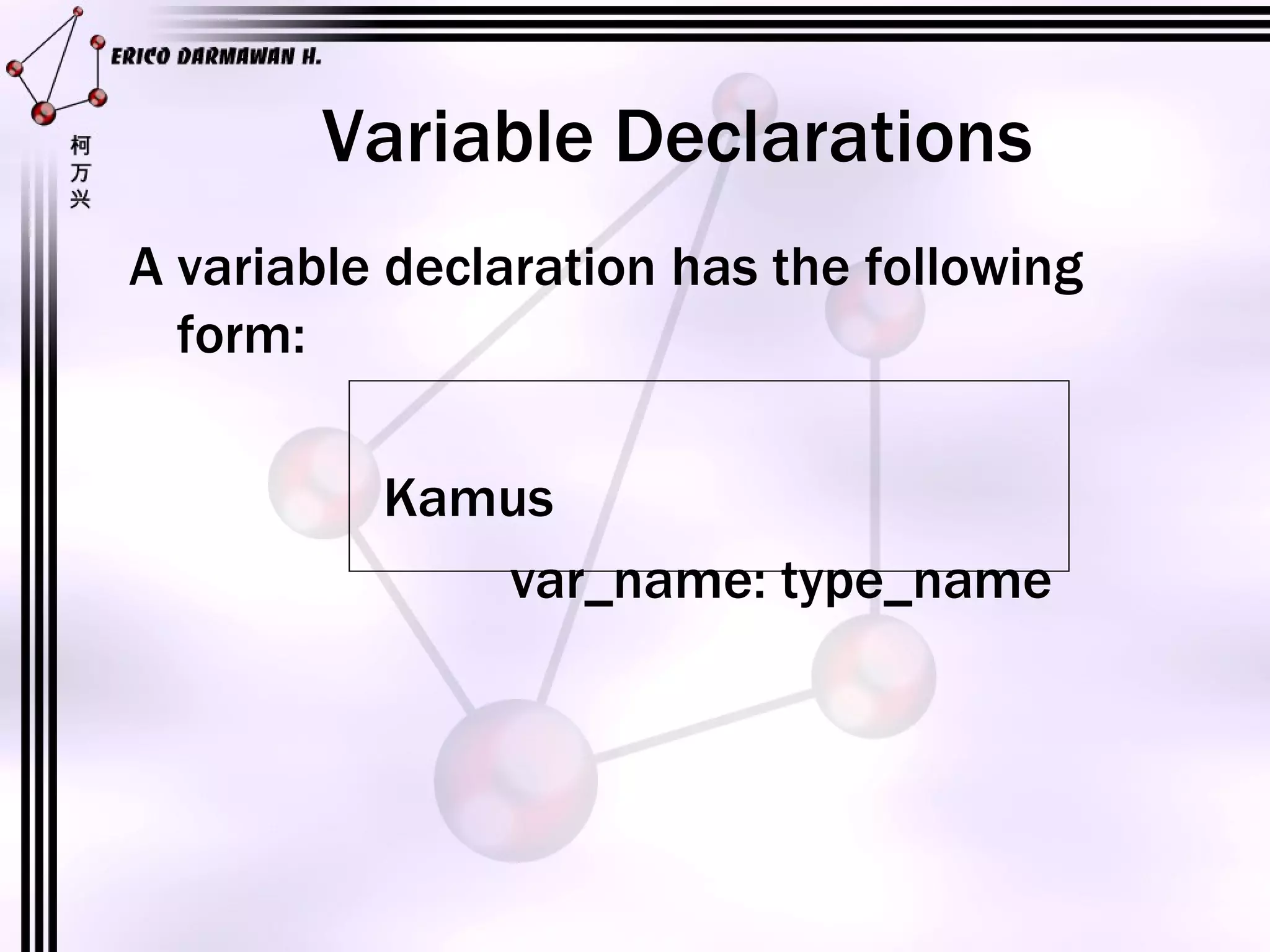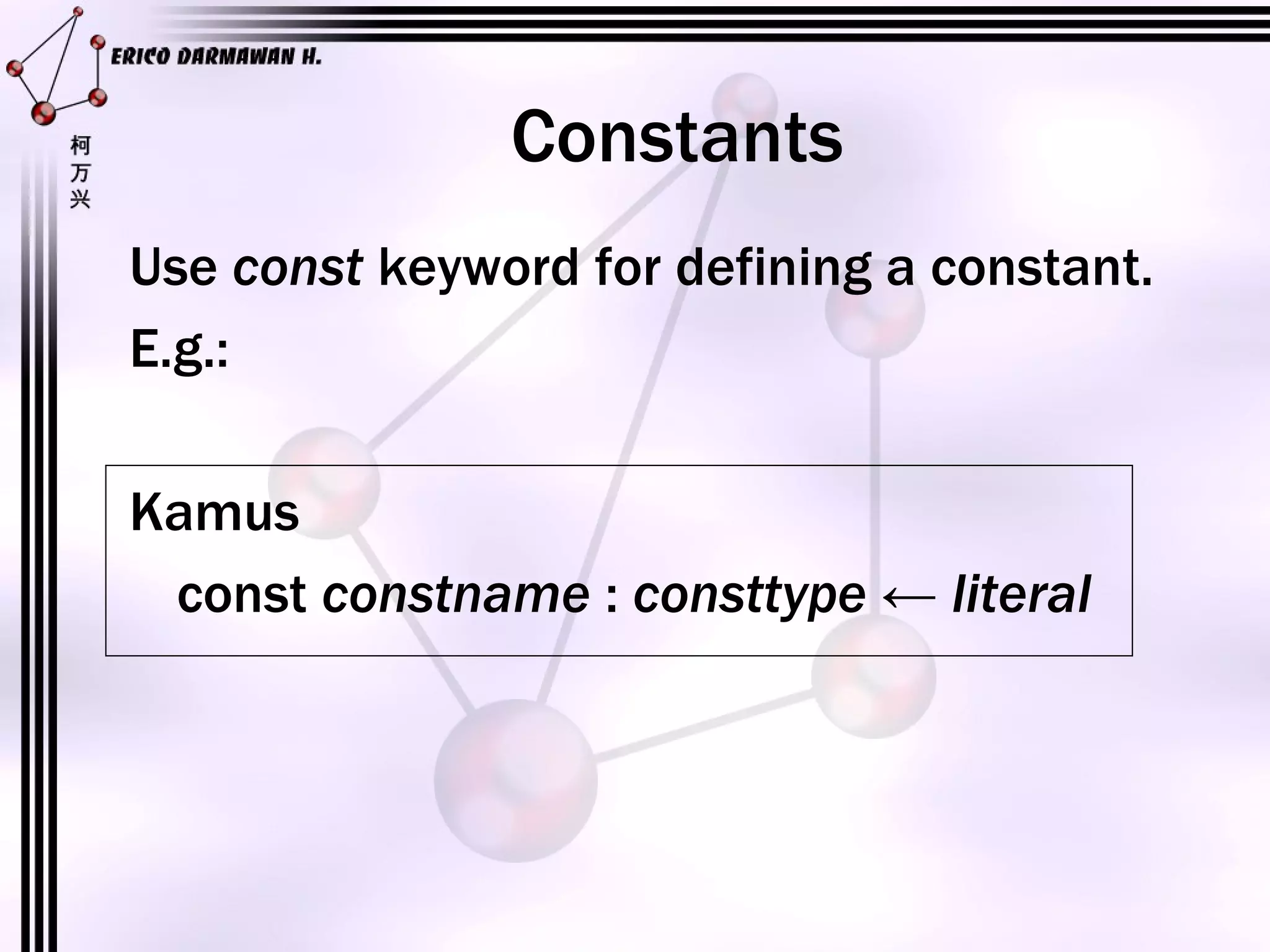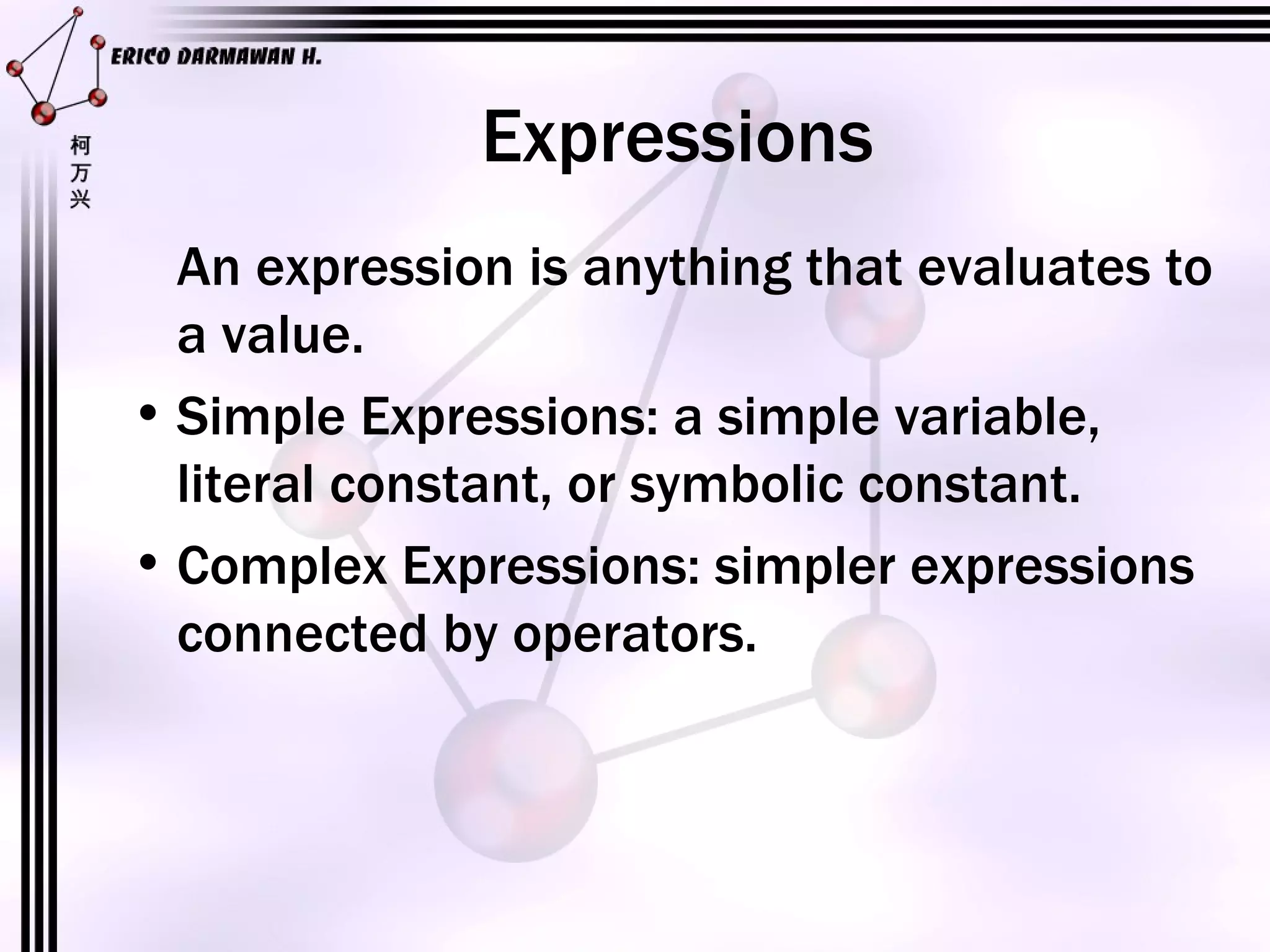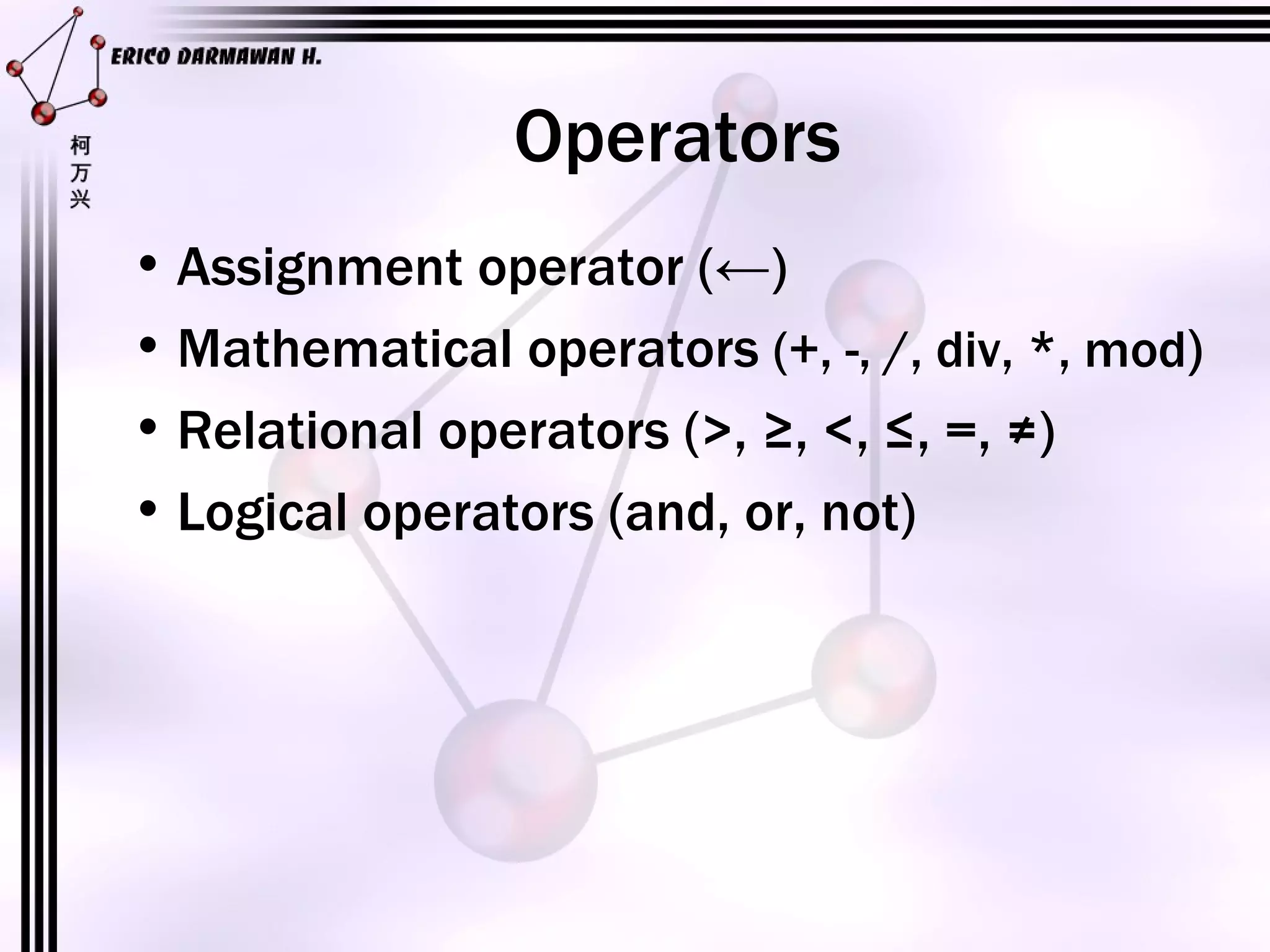1) The document introduces algorithms and their components such as programs, functions, variables, constants, expressions, and operators.
2) An algorithm is defined as a set of steps needed to solve a problem and examples of blackjack and squaring a number are provided.
3) The main components of an algorithm are identified as the program name, variable definitions, function prototypes, and the step-by-step algorithm.

